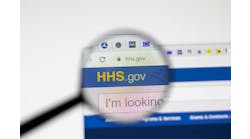The National Association of ACOs, the American Medical Association (AMA) and others have jointly signed a letter requesting that CMS (the Centers for Medicare & Medicaid Services) allow certain ACOs to continue in the Medicare Shared Savings Program (MSSP) Track 1 for a third agreement period before having to move to a two-sided risk model.
The writing organizations, which also include the Medical Group Management Association (MGMA), the American College of Physicians (ACP), the Premier healthcare alliance, and the Association of American Medical Colleges (AAMC), said, “Our recommendations reflect our unified expectation and desire to see the MSSP achieve the long-term sustainability necessary to enhance care coordination for Medicare beneficiaries, lower the growth rate of healthcare spending and improve quality in the Medicare program. Specifically, our key goals for the MSSP include encouraging increased participation, enabling ACOs to continue in the program and creating a successful, long-term ACO model for Medicare. It is in Medicare’s interest for ACOs to continue in order to provide high quality care for beneficiaries and to reduce the growth rate of Medicare spending.”
As it stands today, MSSP Track 1 remains by far the most popular option for ACOs, representing 82 percent of all MSSP ACOs in 2018. However, as the letter to CMS Administrator Seema Verma reads, “ACOs may only remain in Track 1 for two agreement periods before being required to move to a two-sided risk model or drop out of the program. Many ACOs remain in Track 1 because they are unprepared to assume risk requiring them to potentially pay millions of dollars to Medicare, which is simply not practical or feasible for most of these organizations.”
The letter further states that providers in rural areas and safety-net providers often face even greater challenges than other providers when considering taking on risk. As such, they said, “The financial position and backing of a particular ACO as well as the ability to assume risk depends on a variety of factors, such as local market dynamics, culture, leadership, financial status, and the resources required to address social determinants of health that influence care and outcomes for patients with complex needs.”
What’s more, ACOs that began the MSSP in 2012 or 2013 entered into second agreement periods in 2016 and are on schedule for their third agreement periods to begin in 2019. This is the first time ACOs will be forced into a two-sided risk arrangement. But the organizations note that “these ACOs are the first MSSP cohort and those that remain have shown significant dedication to the ACO model. They embraced the MSSP early on and were instrumental in working collaboratively with one another and CMS to help shape the program.” They go on to write that these ACOs need more time to prepare for two-sided risk.
Interestingly, while these Track 1 MSSP ACOs contend that they need more time in their current model, CMS data on another federal ACO program—the Next Generation model, which includes two-sided risk, revealed that participants did quite well in 2016—the first year of the Next Gen program.
Nonetheless, the organizations wrote, “While six years may sound sufficient, given the programmatic changes and considerable learning curve for these ACOs, this is not enough time. Further, when they have to make their decision about 2019 participation these ACOs will only have performance data available for four performance years, 2012/2013 through 2016.”
As such, based on evaluation of the four performance years for which data is available, they are urging CMS to allow Track 1 ACOs that meet at least one of the criteria below to have the option to continue in Track 1 for a third agreement period:
- Generate net savings across four performance years
- Score at or above the 50th percentile in quality in two of three pay-for-performance years
- Improve their overall quality score by 10 percentage points or greater over the course of pay-for-performance years
The letter concludes, “It’s important to recognize that Track 1 ACOs that are not ready for risk will not move forward; they will quit the program altogether. Using a government mandate for risk is not the solution to increasing participation and achieving successful results for two-sided ACOs.”


